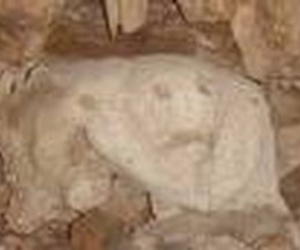Archaeological Census Reveals Human Presence in Cuba 8,000-10,000 Years Ago
- Submitted by: lena campos
- Science and Technology
- 08 / 13 / 2013

An archaeological census performed by the Anthropology Institute within the Cuban Science, Technology and Environment Ministry has found that the human presence on the island hypothetically dates from between 8,000 and 10,000 years ago, local media reported on Sunday.
The project that has been under way in Cuba for the past two years incorporates the research and experience of archaeologists, experts, historians, institutions and hobbyists and the officials heading it, as cited by the state-run Prensa Latina news agency, say it is expected to wrap up in January 2014.
The research uses maps with precise coordinates on the municipality level with the aim of providing a general idea about the aboriginal archaeological situation in the country, and it also includes a series of elements to allow the production of a more finished product: the Aboriginal Archaeological Atlas of Cuba.
In compiling Cuba’s human settlement history, the indigenous peoples are catalogued as pre-agropottery (before the 3rd century B.C.E.), proto-agricultural (2nd century B.C.E.) and agropottery (5th century C.E.) to encompass their diverse sociocultural connections.
Archaeologists Jose Jimenez Santander, who is in charge of the census, and the head of the archaeology department at the Cuban Institute of Anthropology, Alfonso Cordova, said that so far more than 3,200 aboriginal archaeological sites have been located on the island.
Some of the sites were human dwelling places, as surmised by the presence of food remains and hearths, along with other evidence of tools and trash, all of which show that those sites were inhabited by ancient communities for some time, the experts say.
“Others functioned as rest stops, since they are areas ... without evidence of prolonged habitation made by ... mobile communities that moved periodically but repeated their stays, as well as inhabited caves,” Jimenez Santander said.
He also said that there are signs of the use of caves for ceremonies, burials, cave painting sites, shell workshops to make vessels and other objects, as well as evidence of chipped flint, tools and assorted work rubbish.
Source: LAHT.com
Comments